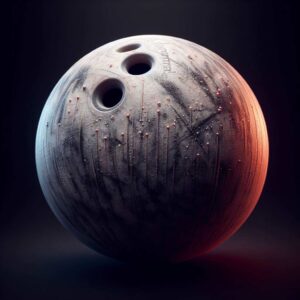Bowling is a precision sport often down to the inch. While seasoned bowlers have developed keen accuracy for rolling strikes, recreationally, it’s unlikely many have precisely considered the bowling lane’s width or total dimensions.
Yet to consistently pick up spares and throw strikes, understanding the exact widths separating gutters alongside approach standards benefits all bowling enthusiasts. Especially considering the competitive balance between bowlers and varied lane patterns.
This article fully examines the regulation width dictating every bowling lane plus precisely how total dimensions can impact bowling balls’ hook potentials. After reading, you will know the standardized boundaries and tactics for avoiding gutters relative to bowling lane width.
Official Bowling Lane Width Regulations
First, examining technical jargon, what specifically constitutes the “width” of a ten-pin bowling lane? In official terms per the United States Bowling Congress (USBC) Equipment Specifications and Certifications manual:
The lane width spanning from gutter to gutter must be 60 1⁄2 inches.
Yet only 42 inches between gutters represent the actual playable surface allowing balls to roll towards pins. The remaining 18 1⁄2 inches encompass interior and exterior gutters preventing errant rolls from escaping lanes.
Therefore, in terms of the regulatory bowling lane width for playable bounds, the official USBC standard under the World Bowling ruling body equals 42 inches across ten pins. These measurements have been universally implemented for decades.
Specifically, 42 inches has remained the mandated bowling lane width since the 1938 introduction of standardized specifications by what was formerly the American Bowling Congress.
Previously disparities existed, especially in the early 1900 series when less regulation caused widths ranging anywhere from 41 to 44 inches between old-school wooden bowling lanes.
Yet major competitive circuits gradually aligned equipment around consistent measurements. After all, professional and league play strives for uniform lane conditions giving bowlers reliability in their angles of approach, ball hook potential, and resulting pin action. This is why 42 inches stuck once rules solidified in the late 1930s allowing for fair play across locations.
The subsequent united lane width has continued into the modern technological era spanning from classic wood panels to synthetic lanes of urethane or plastic composition within contemporary bowling centers.
Complete Bowling Lane Dimensions Including Approach and Length
Looking beyond merely the playable bowling lane width between gutters, what are the total dimensions encompassing an entire regulation-sized lane? From the bowler’s approach to the last standing pin, standard tenpin lanes comprise three defined sections:
- Approach – 15 feet to the foul line.
- Lane – 62 feet from the front of the foul line to the headpin.
- Pinnacle – Contains pin deck extending behind pins.
Thus, the total length from the throwing starting point until hitting the front headpin spans about 60 feet once reaching the pin setting space. Again per USBC regulations, official acceptable lane length limits are:
Minimum: 55 feet (Should not be shorter than 55 feet across 10 pins) Maximum: 62 feet (Should not exceed 62 feet from foul line to pins)
So modern synthetic or wood lanes maintain the 60-foot midpoint. Meaning, that competitive bowlers can practice repeatable targeting and timing for their typical walking pace, strides, and release points when transferring houses or bowling on various league conditions knowing distances will play similarly throughout regulation lanes. 60 feet equates to approximately 19-20 walking steps for a bowler to complete their approach.
Meanwhile, the overall total width including exterior channels that let stray balls drain underneath lanes measures a wider 60 1⁄2 inches across as noted within the technical specifications.
Competitive Advantage of Standard 42-inch Bowling Lane Width
Carrying underlying knowledge of the exactly defined 42-inch width can leverage a leg up for bowlers aiming their angles. Especially on tighter sport-compliant patterns versus more recreational houses allowing greater error margins.
Consider how narrow 42 inches truly spans relative to balls curving beyond 10 feet in length when momentum kicks in through the oil. Side-to-side bounds limit overcorrection, so working knowledge benefits scoring:
Tighter aim required across exact width dimensions:
With pin targets less than 42 inches themselves, little room exists for errant hooks into channels once a ball starts its downward pendulum motion towards the deck striking location.
Staying within the finite sideways confines means no wasted turns. Bowlers must exercise precision slide steps and straight follow-through release points to keep balls from veering off-lane at the halfway mark or beyond.
Controlled hook potential for advanced ball reactions:
Advanced players may leverage maneuvers like visual targeting across specific boards to harness equipment potential. Focusing angles inside the finite 42-inch width magnifies how backups, sideways roles, or inside-outbreak point hooks operate.
Subtle ball technology tweaks become more pronounced within regulated bounds versus house shots offering greater wiggle room.
Gutter tendencies require adjustment Depending on finger-tip grips, high or low three-hole spreads, and wrist flick angles at release, the restricted sideways parameters demand adjusting inherent ball reaction curving.
What might normally yield strikes given a couple of extra inches of leeway now requires tightening up against the unforgiving channels. Spinners and late hookers especially need modifying angles not to ride gutters or fall off the edge at the breakpoint.
Once bowlers adapt to the exact 42-inch width, it soon becomes second nature improving consistency, expanding arsenals within the playable bounds, and avoiding negative pinfall results. Leveraging lane width knowledge leads to big match play prep and stepladder victories.
Do Bowling Lane Widths Vary? Oil Patterns and Lane Surface Differences
Minor variances exist across various bowling houses and conditions. Mostly from pattern oil differences determining hook potential, not lane widths themselves shifting per se which remain standardized at 42 inches between channels.
Oil patterns, the zone coverage, and specific types – ratios of oil-to-conditioner that alter friction – lead balls to maneuver differently before backends kick in rolling towards pins.
Common examples include:
- THS – “Typical House Shot” oil patterns focus conditioner inside with drier outside boards. The most bowler-friendly allowing power players to swing balls wide with ample miss room before seeing the boards’ natural hook take over down lane.
- Sport patterns – Challenge professionals and leagues using “flatter” transverse oil coating more boards restricting miss zones and requiring finesse with limited hook room in narrower playable zones.
- Mixed patterns – Various streaks across the lane randomly altering expectations. This means reading transitions and adjusting lines as previous paths no longer repeat the same way.
So while the raw bowling lane width always stays 42 inches from the standard foul line to gutters 10 feet or 60 feet down, a stroker starting vectors and eventual backend curves can maneuver differently based on factors like:
- Oil ratios adjusting friction
- Conditioner types altering viscosity
- Uneven coating patterns misleading usual lines
- Wood versus synthetic surfaces changing predictability once past the oil
- Normal lane wear over the course of games and sessions expanding hook zones.
Yet the given 42-inch horizontal regulations themselves do not adjust once installed for certified league and tournament competition featuring uniform distance measurements.
Do note vintage, non-sanctioned houses utilizing very aged wood lanes may show slight width shrinkage over decades where upkeep has lacked. However, certification processes ensure regulation dimensions are maintained across ABC/USBC centers and events.
The set 42-inch bowling lane width affects play worldwide. Only recreational, custom-made bars/entertainment venues might offer novelty sizing extra wide.
Yet competitive bowlers should encounter the same 42 to 60 1/2-inch dimensions from Indianapolis to Melbourne to Johannesburg all adhering to international standards.
Conclusion How Wide is a Bowling Lane? Know Your Regulations
Next time practicing those high backswing release points sending the brightly colored pearlized resin gliding smoothly toward awaiting pins, understand the exact 42-inch bowling lane width governing that legal playable area.
From four-inch gutters outwards across 10-pin lanes spanning 60 feet total towards waiting pins, 42 inches makes for little horizontal mistake room once balls reach the friction point. Yet controlling ball speed, velocities, and revolutions becomes more pronounced given such a narrowly defined scope side-to-side.
Use the officially mandated measurements becoming second nature for both recreational fun or competitive advantage when leagues and tournaments come down to single pin counts where every inch matters!
Frequently Asked Questions
What is the width of a bowling lane?
The regulation width of a ten-pin bowling lane between the gutters is 42 inches. This spans the legal playable area from one gutter to the other across the length of the lane.
How much space is needed for a bowling lane?
The total dimensions needed for a regulation ten-pin bowling lane, including the approach area and pin deck, is at minimum 55 feet long by 60.5 inches wide. Recommended spacing for a lane is 60 feet by 60.5 inches minimum.
What are the dimensions of a bowling space?
A standard bowling center with multiple lanes needs at least 12-15 feet of space behind the foul line for the bowler’s approach. The lane itself is 60 feet long and 60.5 inches wide including gutters. Behind the deck, allow 8-10 feet of clearance for seating areas and walkways.
What are the dimensions of a 5-pin bowling lane?
A 5-pin bowling lane width is the same regulation 42 inches between gutters as a 10-pin lane. However, the overall length of a 5-pin lane is shorter at 45 feet from the foul line to the head pin versus 60 feet.
What are the dimensions of a modern bowling lane?
Modern regulation bowling lanes adhere to the longstanding 60 feet by 60.5 inches dimensions. This includes a 42-inch width between gutters – playable area – plus approach and pin deck spaces behind. Synthetic lanes offer durability over classic wood.
How wide is a bowling lane including gutters?
The total width of a regulation ten-pin bowling lane including interior and exterior gutters is 60 1⁄2 inches wide. The interior gutter-to-gutter playable width is the standard 42 inches that balls roll across.
Is owning a bowling alley profitable?
Owning a bowling alley can be profitable due to multiple revenue streams like game and shoe rental fees, food and drink sales, pro shop revenue, hosting events/parties, leagues, and more. However, costs are high for land, building maintenance, staff, insurance, and equipment. Careful planning of size, amenities, and business modeling is crucial.
How big is a home bowling alley?
Typical dimensions for a 2-4 lane home bowling alley are at least 45 feet long by 15 feet wide. This accounts for standard approach length plus adding seating room behind the pin deck. The height to install regulation pin setting equipment is at least 12 feet.
Why are bowling lanes oiled?
Bowling lanes are regularly oiled to protect the wood or synthetic surfaces which would break down from the friction of rolling balls without conditioner. The oil patterns applied in specific zones also allow bowlers to leverage ball reaction physics, enhancing hooks, curves, and pin action dynamics.





